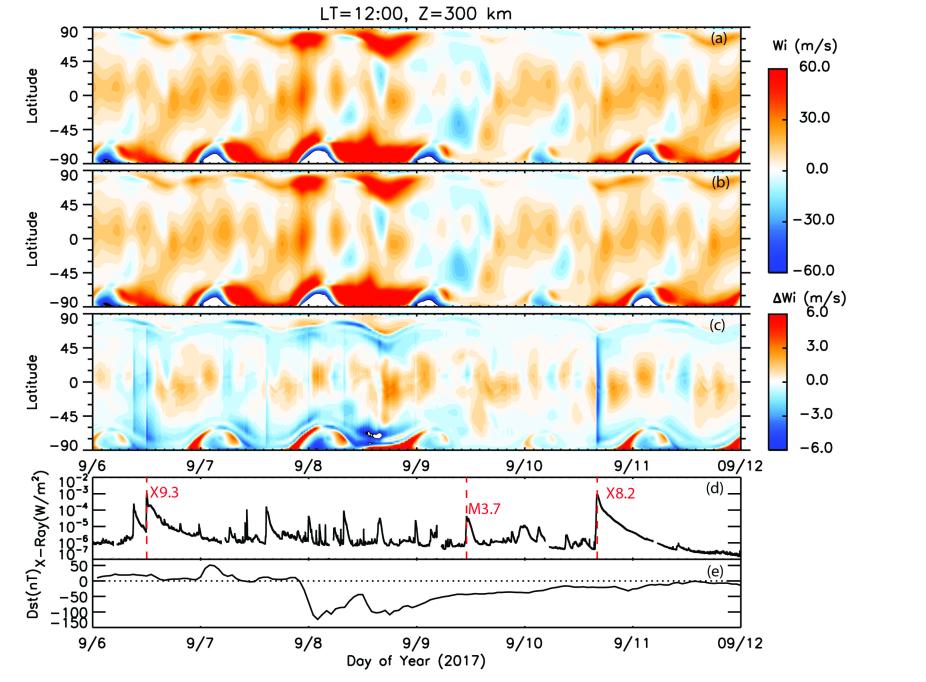Publication Name: JGR; Author's Names: Liying Qian, Wenbin Wang, Alan G. Burns, Phillip C. Chamberlin, Stanley C. Solomon
We conducted numerical simulations to examine dayside thermosphere and ionosphere responses to concurrent solar flares and a geomagnetic storm during September 6th – September 11th, 2017, as well as the interplay of flare and storm effects. We found that E-region electron density response to the flares was much smaller inside the auroral oval than it was outside the auroral oval due to an extra source of ionization by auroral particle precipitation. During quiet times in this period, flare enhanced ionization, which decreased daytime eastward electric fields, caused an initial weakening of the vertical E x B drifts.

The simulated vertical E x B drift velocity (Wi), and the changes of the vertical drift velocity due to the flares, at 300 km and12:00 LT (September 6th – September 11th, 2017). (a) Wi using the flare spectrum and observed Kp; (b) Wi using the daily spectrum and observed Kp; (c) the difference between (a) and (b), which is the response to the flares in the presence of the storm; (d) the GOES X-ray energy flux in 0.1 – 0.8nm; (e) the Dst index. The vertical dashed lines indicate the flare peaks.
This weakening of the vertical E x B drifts was on the order of ~ 20% for an X8.2 flare in this period. During storm times, flare-induced initial changes of the vertical plasma drifts varied between being positive and being negative, depending on latitudes, due to storm-time disturbance dynamo effects. Storm effects also overall weakened flare effects on geopotential height, ionospheric F2 peak height hmF2, and ionospheric F2 peak electron density NmF2. In addition, storm effects changed the latitudinal distributions of flare effects on hmF2, NmF2, vertical plasma drifts, and O/N2. On the other hand, no major X-class flare occurred shortly before or during the storm. Model simulations indicate that the weaker C- and M- class flares that occurred before and during the storm had a minor effect on the amplitude of the large-scale traveling atmosphere disturbances generated by the storm.